Abstract
Previous studies in metabolic alkalosis have demonstrated that two factors are the prime determinants of acid excretion and bicarbonate reabsorption; first, the diversion to distal exchange sites of sodium previously reabsorbed in the proximal tubule and loop of Henle; and, second, a stimulus to sodium-cation exchange greater than that produced by a low-salt diet alone. In the present study we have examined the hypothesis that these two factors are also the prime determinants of acid excretion during the administration of mineral acid loads. To test this hypothesis, we have administered to dogs ingesting a low NaCl diet a daily dose of 7 meq/kg of H+ with anions (chloride, sulfate, or nitrate) whose differing degrees of reabsorbability influence the speed and completeness with which each is delivered to the distal nephron with its accompanying Na+. After 2-3 wk of acid administration, and after an initial urinary loss of Na+ and K+, the steady-state value for plasma [HCO3-] was 8.6 meq/liter below control in the HCl group, 3.7 meq/liter below control in the H2SO4 group, and unchanged from control in the HNO3 group; all of these values were significantly different from each other. We would propose the following explanation for our findings: when HCl is administered chronically, marked acidosis occurs because distal delivery of Cl- is restricted by the ease with which the Cl- can be reabsorbed in the proximal portions of the nephron. Only when Cl- retention produces sufficient hyperchloremia to insure delivery of Na+ (previously reabsorbed in proximal tubule and loop of Henle) to the distal nephron in quantities equal to ingested Cl is this primary constraint removed. In the case of sulfuric and nitric acids, there is no constraint on distal delivery, the nonreabsorbability of the administered anion causing prompt, total delivery of Na+ to exchange sites in quantities equal to administered hydrogen. Thus, with H2SO4 and HNO3 the sole constraint on removal of the acid load is the inability of the distal exchange mechanism to conserve the Na+ increment fully by means of H+ exchange. Escape of Na+ and K+ into the urine and the resulting stimulus to Na(+)-H+ exchange remove this constraint and are responsible for establishment of a new steady-state of acid-base equilibrium at plasma [HCO3-] levels significantly higher than those seen with HCl. The feeding of HCl in the presence of a normal salt intake led to a degree of metabolic acidosis not significantly different from that seen in dogs ingesting a low-salt diet. We suggest that the presence of dietary sodium at distal exchange sites did not enhance acid excretion because it is only after a loss of body sodium stores that sodium avidity is increased sufficiently to allow full removal of the acid load. The present findings indicate that the fundamental factors controlling acid excretion and bicarbonate reabsorption in metabolic acidosis are closely similar to those operative in metabolic alkalosis.
Full text
PDF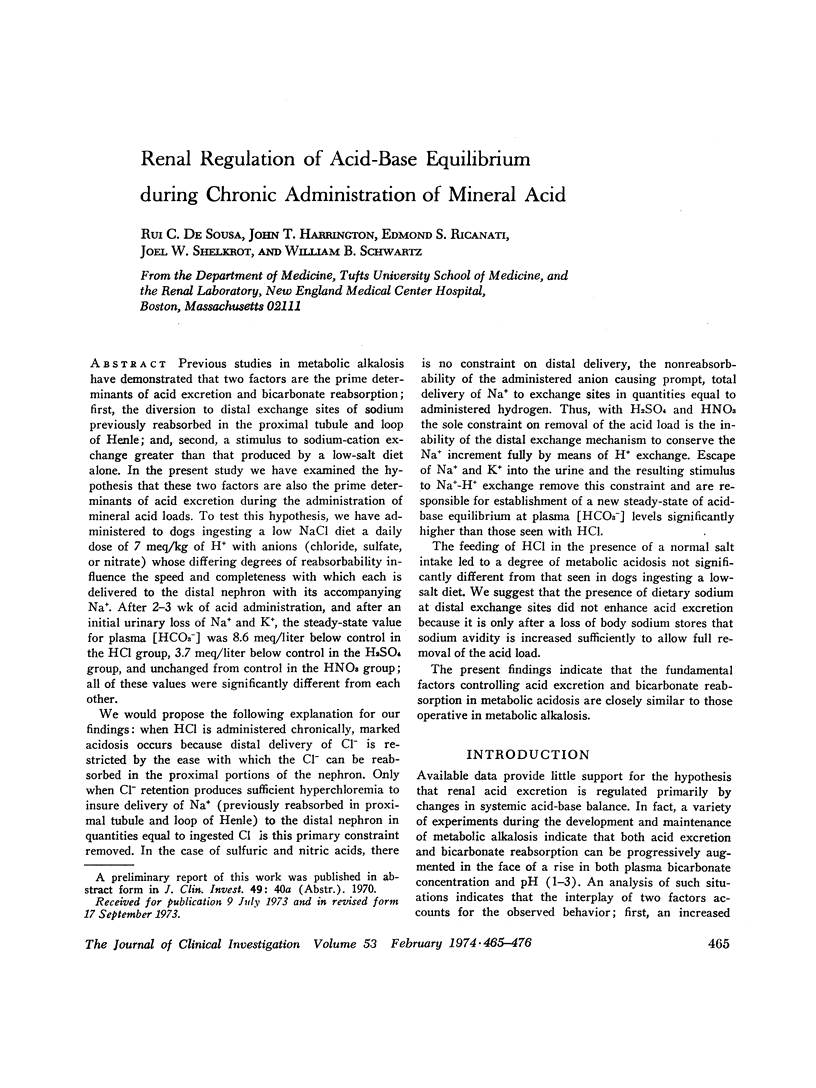
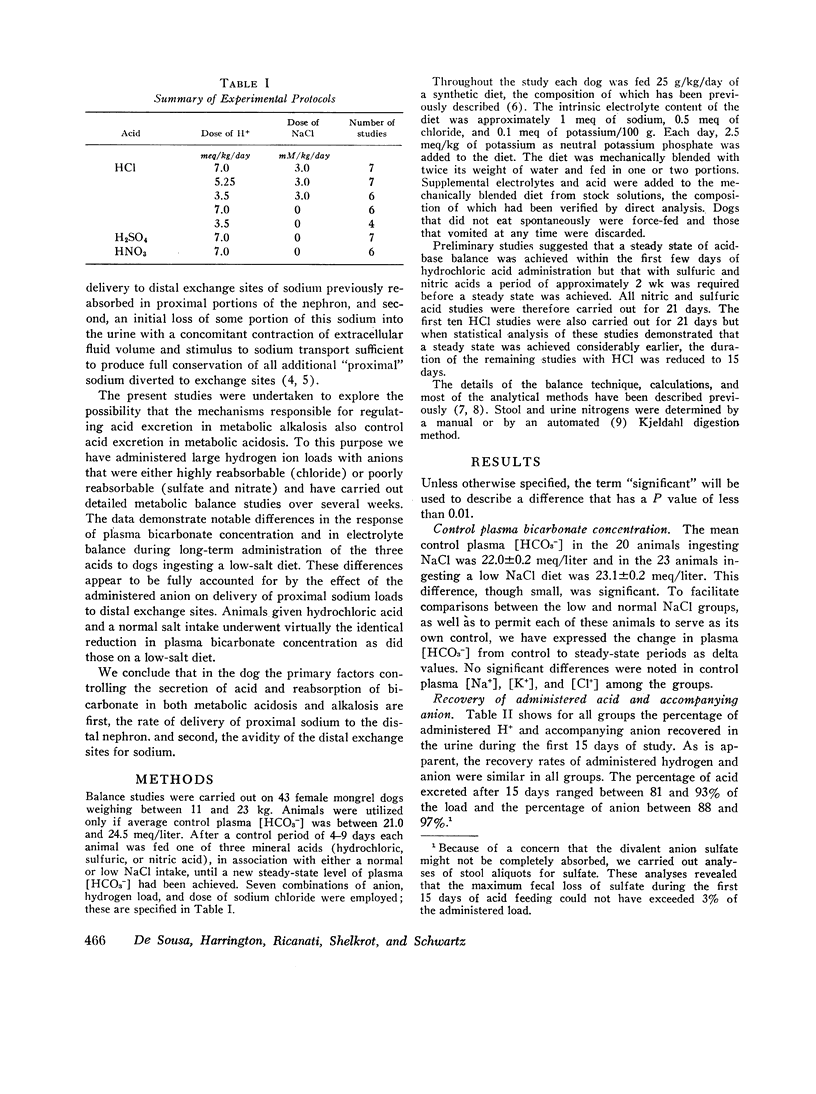
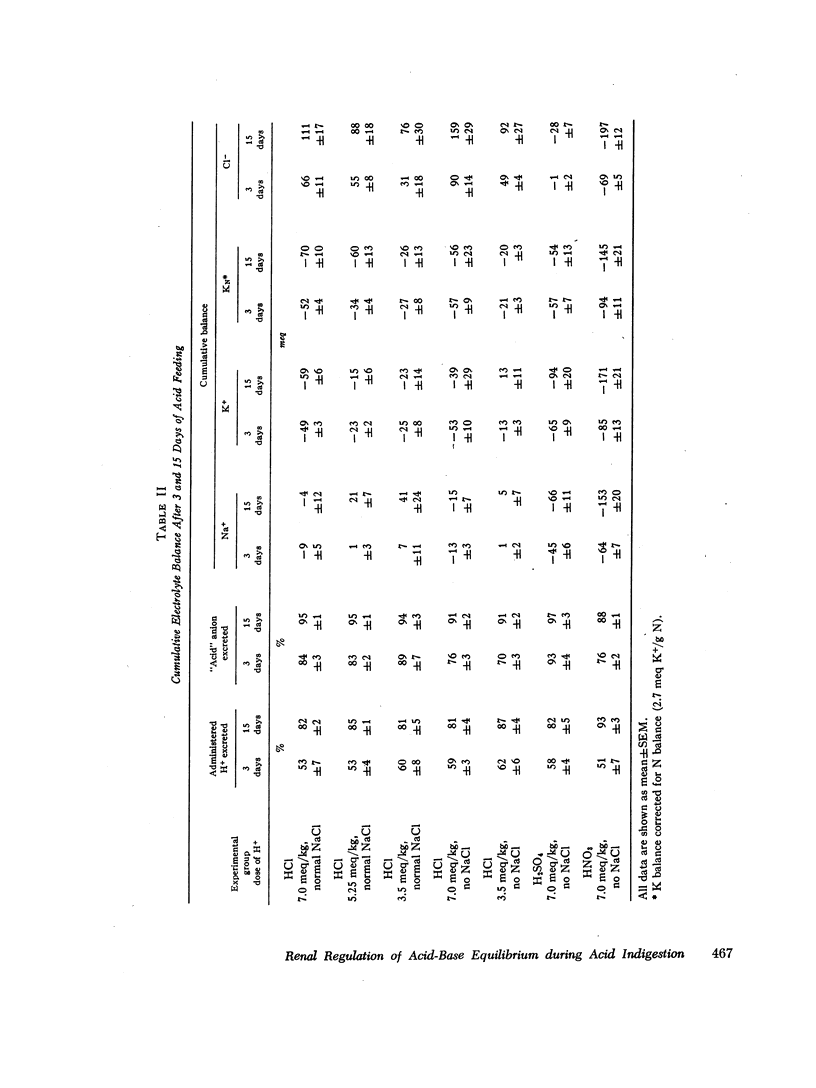
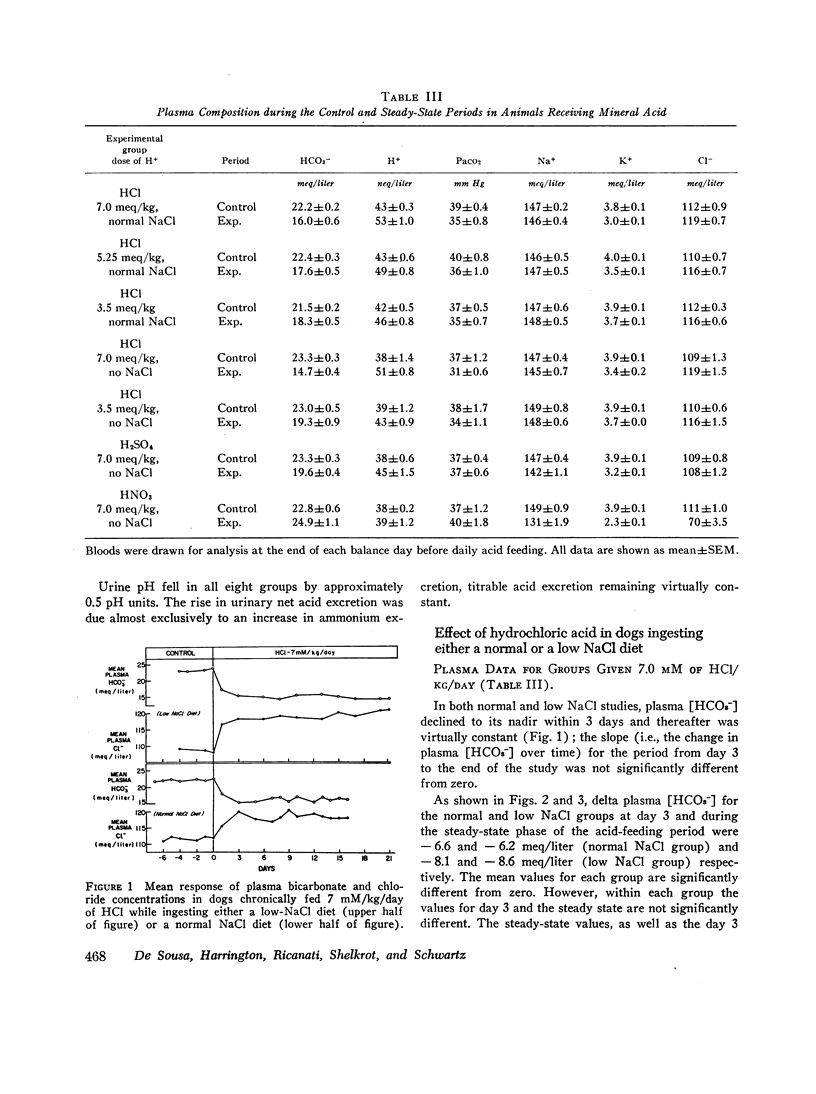
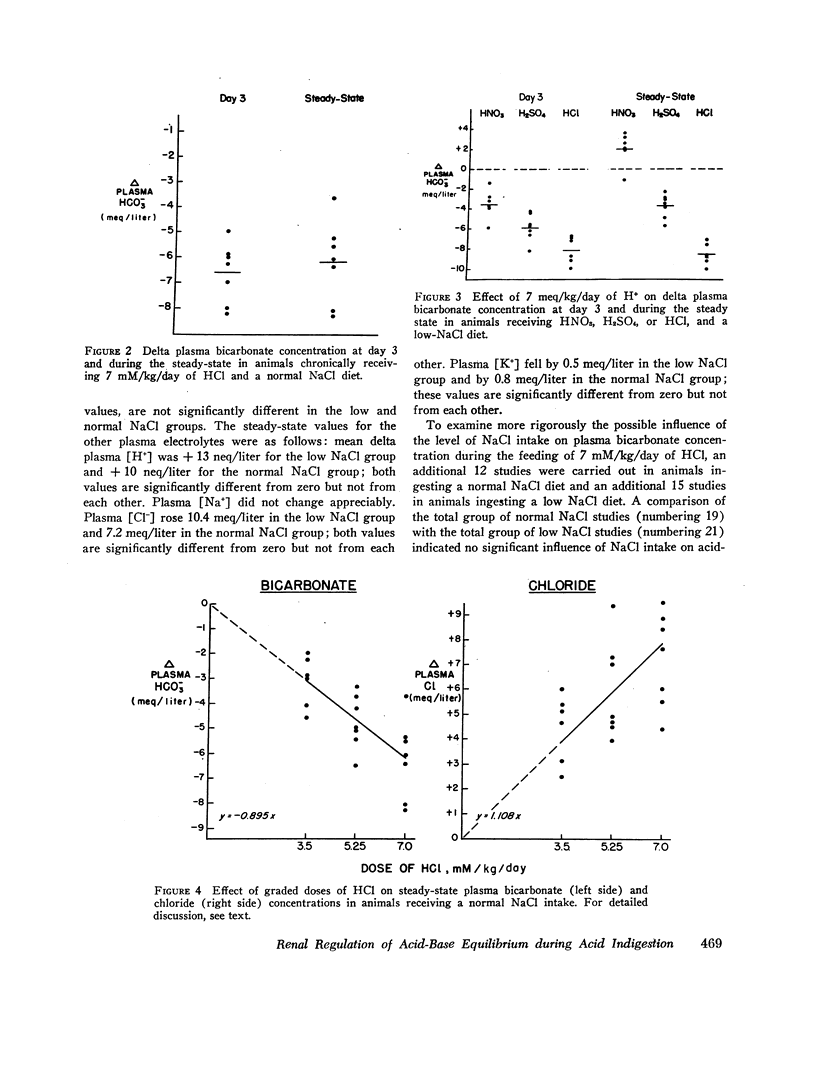
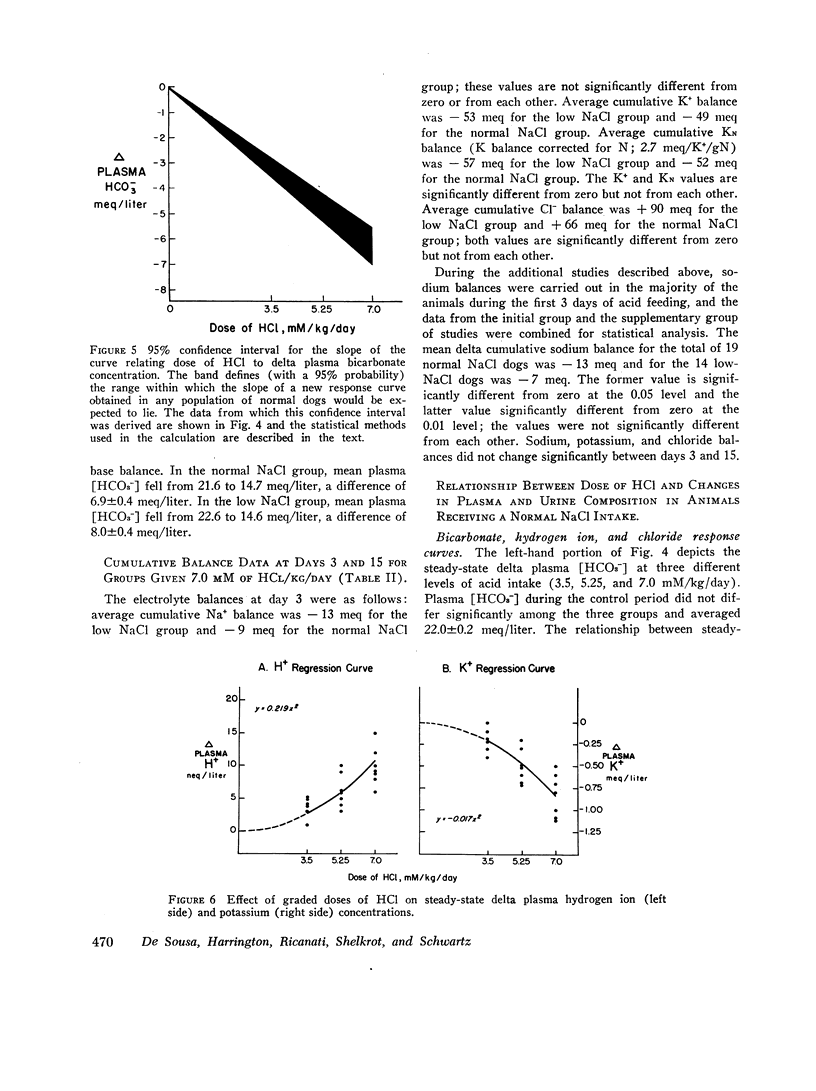
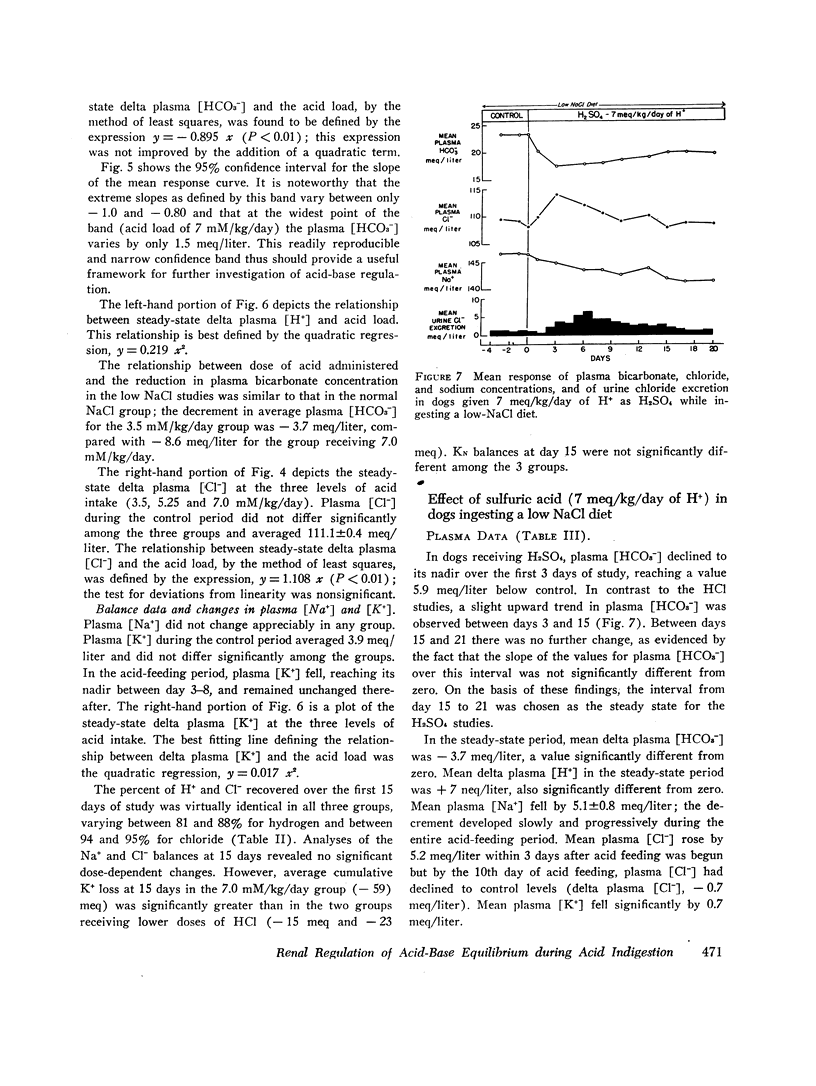
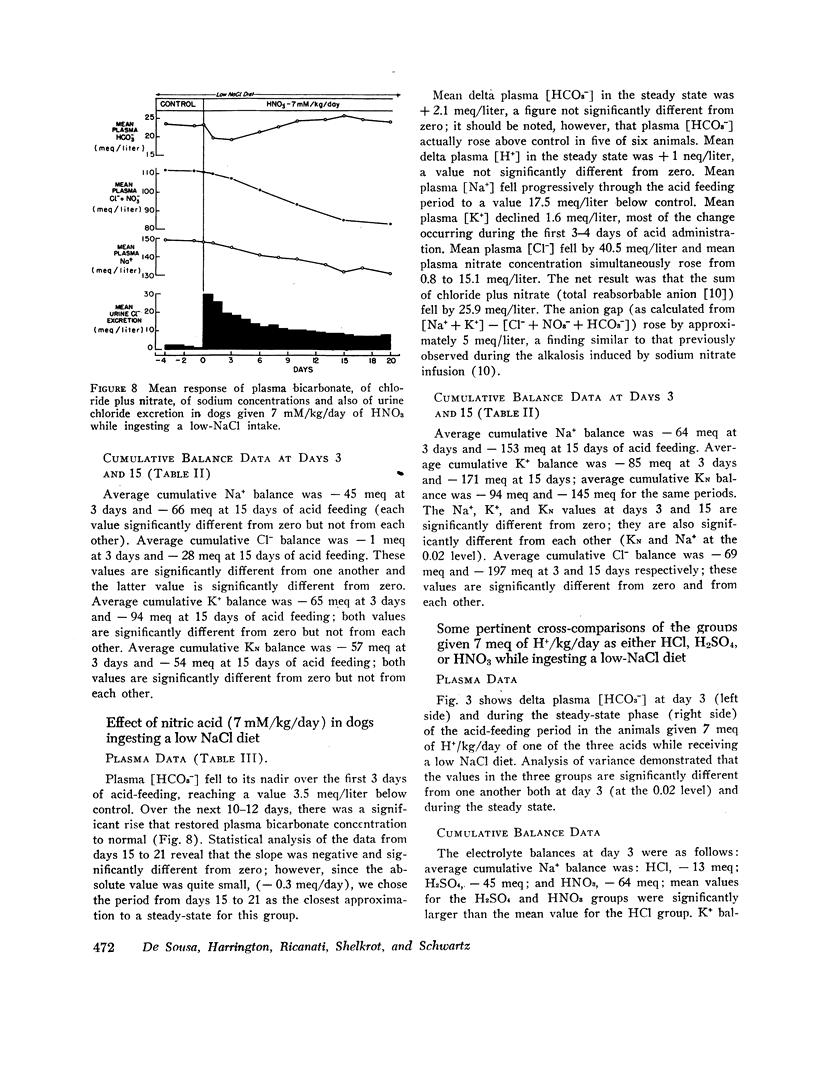
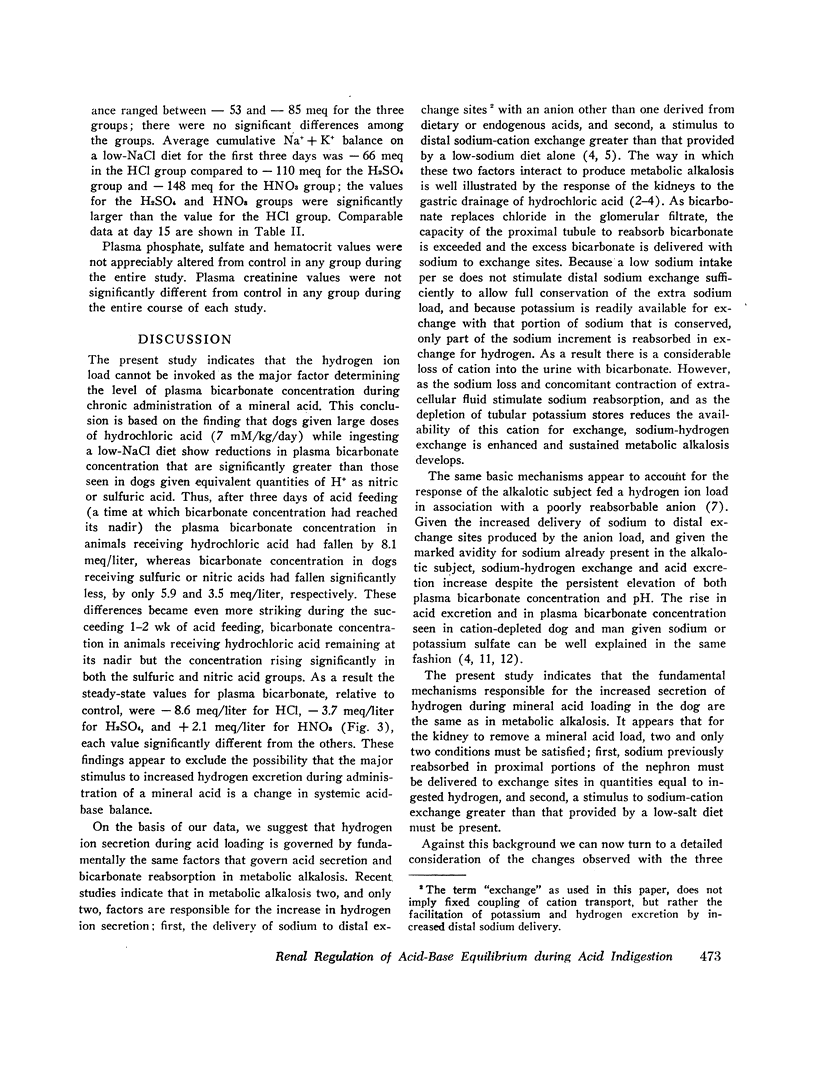
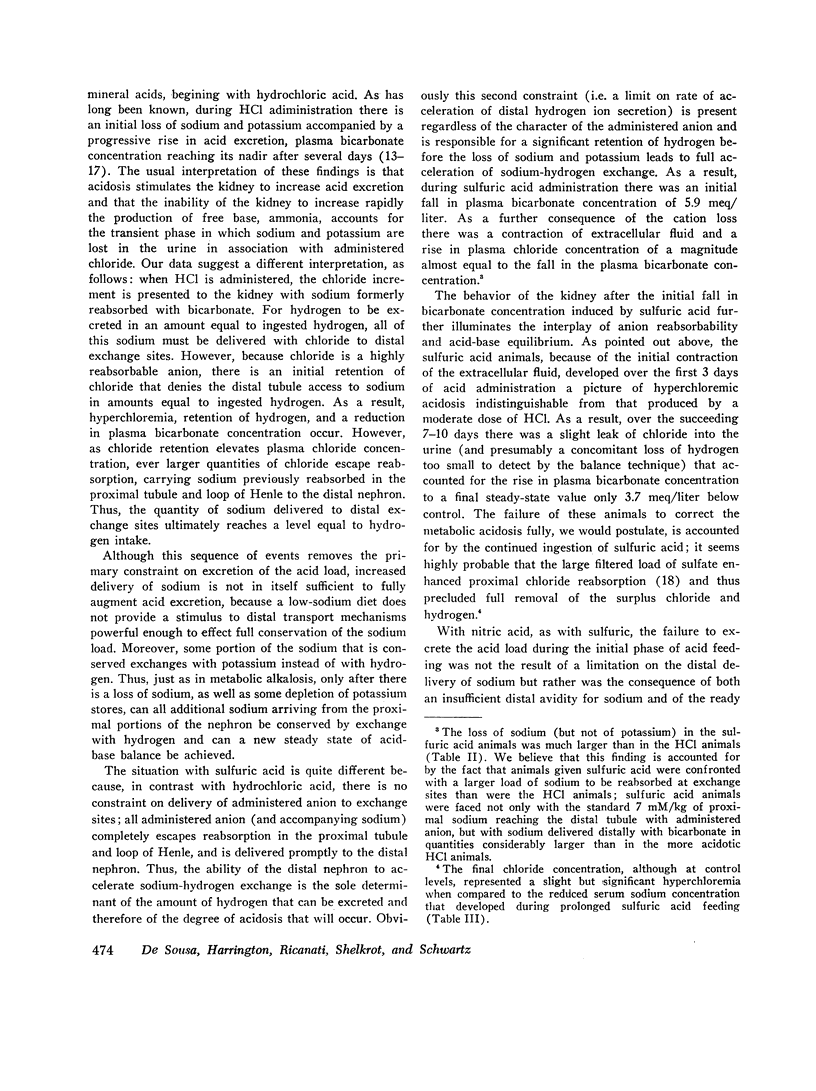
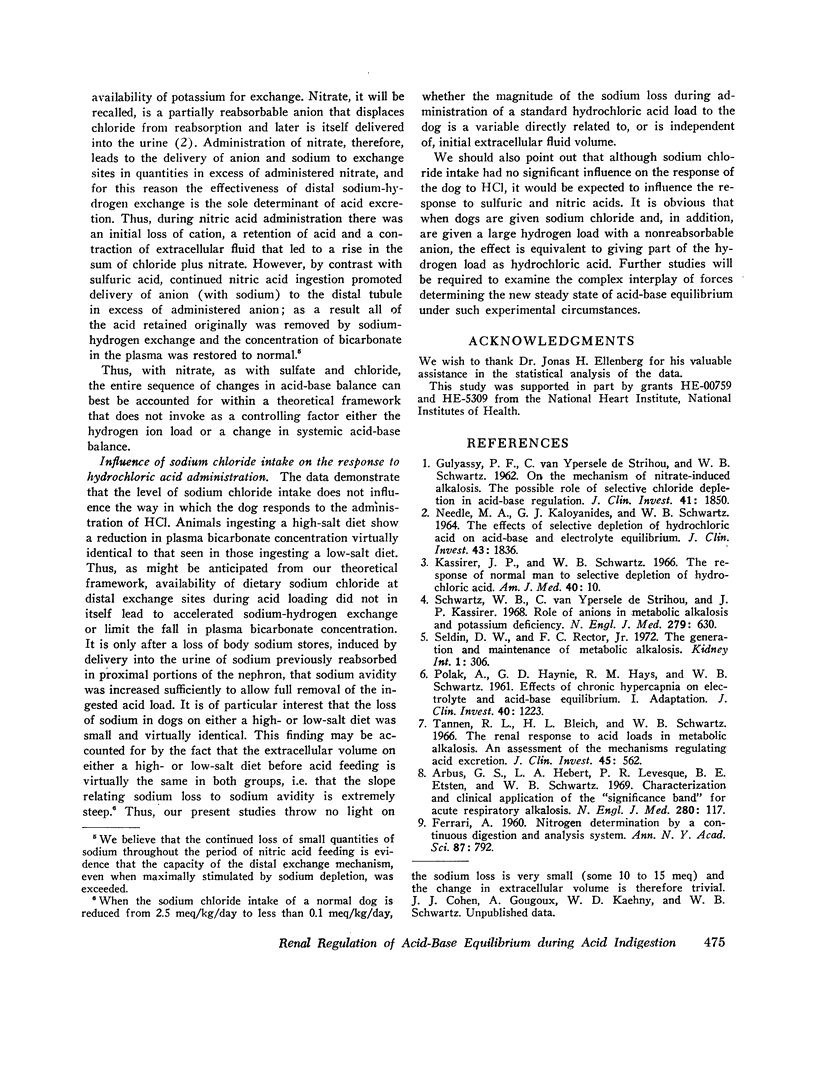
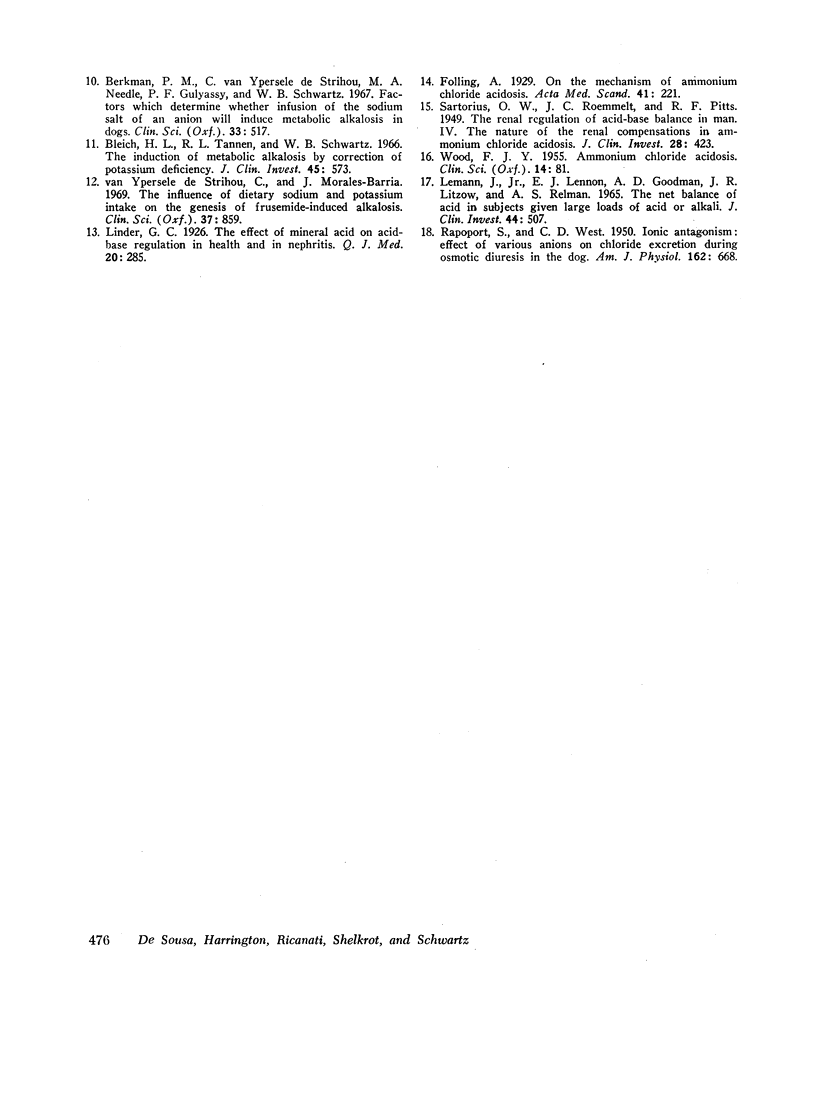
Selected References
These references are in PubMed. This may not be the complete list of references from this article.
- Arbus G. S., Herbert L. A., Levesque P. R., Etsten B. E., Schwartz W. B. Characterization and clinical application of the "significance band" for acute respiratory alkalosis. N Engl J Med. 1969 Jan 16;280(3):117–123. doi: 10.1056/NEJM196901162800301. [DOI] [PubMed] [Google Scholar]
- Berkman P. M., Van Ypersele de Strihou, Needle M. A., Gulyassy P. F., Schwartz W. B. Factors which determine whether infusion of the sodium salt of an anion will induce metabolic alkalosis in dogs. Clin Sci. 1967 Dec;33(3):517–525. [PubMed] [Google Scholar]
- Bleich H. L., Tannen R. L., Schwartz W. B. The induction of metabolic alkalosis by correction of potassium deficiency. J Clin Invest. 1966 Apr;45(4):573–579. doi: 10.1172/JCI105371. [DOI] [PMC free article] [PubMed] [Google Scholar]
- FERRARI A. Nitrogen determination by a continuous digestion and analysis system. Ann N Y Acad Sci. 1960 Jul 22;87:792–800. doi: 10.1111/j.1749-6632.1960.tb23236.x. [DOI] [PubMed] [Google Scholar]
- GULYASSY P. F., VAN YPERSELE DE STRIHOU C., SCHWARTZ W. B. On the mechanism of nitrate-induced alkalosis. The possible role of selective chloride depletion in acid-base regulation. J Clin Invest. 1962 Oct;41:1850–1862. doi: 10.1172/JCI104642. [DOI] [PMC free article] [PubMed] [Google Scholar]
- Kassirer J. P., Schwartz W. B. The response of normal man to selective depletion of hydrochloric acid. Factors in the genesis of persistent gastric alkalosis. Am J Med. 1966 Jan;40(1):10–18. doi: 10.1016/0002-9343(66)90182-3. [DOI] [PubMed] [Google Scholar]
- LEMANN J., Jr, LENNON E. J., GOODMAN A. D., LITZOW J. R., RELMAN A. S. THE NET BALANCE OF ACID IN SUBJECTS GIVEN LARGE LOADS OF ACID OR ALKALI. J Clin Invest. 1965 Apr;44:507–517. doi: 10.1172/JCI105164. [DOI] [PMC free article] [PubMed] [Google Scholar]
- NEEDLE M. A., KALOYANIDES G. J., SCHWARTZ W. B. THE EFFECTS OF SELECTIVE DEPLETION OF HYDROCHLORIC ACID ON ACID-BASE AND ELECTROLYTE EQUILIBRIUM. J Clin Invest. 1964 Sep;43:1836–1846. doi: 10.1172/JCI105057. [DOI] [PMC free article] [PubMed] [Google Scholar]
- POLAK A., HAYNIE G. D., HAYS R. M., SCHWARTZ W. B. Effects of chronic hypercapnia on electrolyte and acid-base equilibrium. I. Adaptation. J Clin Invest. 1961 Jul;40:1223–1237. doi: 10.1172/JCI104353. [DOI] [PMC free article] [PubMed] [Google Scholar]
- RAPOPORT S., WEST C. D. Ionic antagonism: effect of various anions on chloride excretion during osmotic diuresis in the dog. Am J Physiol. 1950 Sep;162(3):668–676. doi: 10.1152/ajplegacy.1950.162.3.668. [DOI] [PubMed] [Google Scholar]
- Sartorius O. W., Roemmelt J. C., Pitts R. F., Calhoon D., Miner P. THE RENAL REGULATION OF ACID-BASE BALANCE IN MAN. IV. THE NATURE OF THE RENAL COMPENSATIONS IN AMMONIUM CHLORIDE ACIDOSIS. J Clin Invest. 1949 May;28(3):423–439. doi: 10.1172/JCI102087. [DOI] [PMC free article] [PubMed] [Google Scholar]
- Schwartz W. B., Van Ypersele de Strihou, Kassirer J. P. Role of anions in metabolic alkalosis and potassium deficiency. N Engl J Med. 1968 Sep 19;279(12):630–639. doi: 10.1056/NEJM196809192791204. [DOI] [PubMed] [Google Scholar]
- Seldin D. W., Rector F. C., Jr Symposium on acid-base homeostasis. The generation and maintenance of metabolic alkalosis. Kidney Int. 1972 May;1(5):306–321. doi: 10.1038/ki.1972.43. [DOI] [PubMed] [Google Scholar]
- Tannen R. L., Bleich H. L., Schwartz W. B. The renal response to acid loads in metabolic alkalosis; an assessment of the mechanisms regulating acid excretion. J Clin Invest. 1966 Apr;45(4):562–572. doi: 10.1172/JCI105370. [DOI] [PMC free article] [PubMed] [Google Scholar]
- Van Ypersele de Strihou, Morales-Barria J. The influence of dietary sodium and potassium intake on the genesis of frusemide induced alkalosis. Clin Sci. 1969 Dec;37(3):859–871. [PubMed] [Google Scholar]


